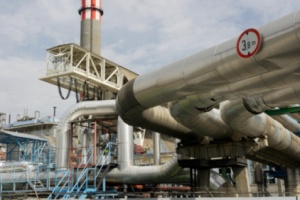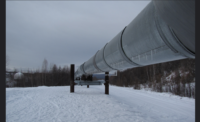 The U.S. Senate’s recent failure to override President Obama’s veto of legislation approving the Keystone XL oil pipeline leaves the controversial project’s fate in the president’s hands. Obama has said he will make a final decision once the State Department finishes its assessment of whether or not the pipeline is in the national interest.
The U.S. Senate’s recent failure to override President Obama’s veto of legislation approving the Keystone XL oil pipeline leaves the controversial project’s fate in the president’s hands. Obama has said he will make a final decision once the State Department finishes its assessment of whether or not the pipeline is in the national interest.
Some experts think that the amount of public attention the pipeline has received over the past six plus years has been a distraction from other, equally important issues related to North America’s energy boom.
Here are some of the pipeline projects:
Energy East: The $12 billion dollar pipeline by TransCanada (the same company behind Keystone XL) would carry about 1.1 billion barrels of tar sands crude each day 2,800 miles from Alberta to Canada’s east coast. About two-thirds of the pipeline already exists, meaning a major part of the project will be converting that existing line, which carries natural gas, into a crude oil pipeline. The project is currently under review by Canadian regulators with a decision expected in 2016.
Line 9 Reversal and Expansion: Last year, regulators in Canada approved a plan to expand and reverse an existing pipeline called Line 9 belonging to Enbridge, a Canadian energy company, so that it flows west to east, transporting 300,000 barrels of tar sands oil per day to refineries in Ontario and Quebec.
Alberta Clipper Expansion: Enbridge is in the process of adding new pumping stations to increase the capacity of the existing Alberta Clipper pipeline, which runs from Hardistry, Alberta to the oil storage hub in Superior, Wisconsin. Ultimately, the company plans to bolster the pipeline’s capacity even further, to roughly 800,000 barrels per day.
Northern Gateway: The $8 billion dollar project consists of two pipelines that would run 1,178 km from the Alberta tar sands to a marine terminal in Kitimat, British Columbia. One would carry 525,000 barrels of oil per day; the other would carry 193,000 barrels of condensate, needed for thinning out the sludge-like consistency of tar sands oil to make it more transportable. Last June, Canadian regulators approved the project, but Enbridge still needs to win the support of First Nations tribes—many of whom remain fiercely opposed.
Trans Mountain Expansion Project: Houston-based Kinder Morgan filed a proposal for an expansion of its Trans Mountain pipeline system in December 2013, seeking to build another pipeline to carry more tar sands oil from Edmonton, Alberta to the west coast of Canada, near Vancouver. If approved, capacity of the pipeline system would nearly triple, from 300,000 to 890,000 barrels per day. The review process is underway, with a decision expected in January 2016.
White Cliffs Expansion: Last March, commissioners in Colorado approved plans to boost capacity of an existing 527-mile pipeline from Platteville, Colorado to Cushing, Oklahoma by about 215,000 barrels per day.
Sandpiper: Enbridge’s Sandpiper pipeline would carry 225,000 barrels oil per day from North Dakota’s Bakken formation about 610 miles east to a storage hub in Superior, Wisconsin.
Flanagan South: Another Enbridge project, this new pipeline recently began carrying oil from Alberta’s tar sands and the Bakken region 589 miles from Flanagan, Illinois to Cushing, Oklahoma, eventually making its way to refineries on the Texas Gulf Coast via another pipeline system. Flanagan South runs alongside the existing Spearhead Pipeline, bringing the combined capacity to nearly 600,000 barrels per day.
Line 3 Replacement: Enbridge plans to replace a major 1,000-mile pipeline from Edmonton, Alberta to Superior, Wisconsin. The $7 million update would replace the aging pipes with new steel and coating—and nearly double the capacity of the existing pipeline for a daily total of 760,000 barrels of oil per day. Like its Alberta Clipper pipeline expansion, Enbridge is claiming it can complete the update without the State Department permit required for cross-border pipelines. Pending approval, work on the pipeline is slated to begin in the summer of 2016.
Alberta to Alaska Pipeline: Recently, Alberta officials met with their Alaskan counterparts in Washington, D.C., to request discussions about building a pipeline linking Alberta’s tar sands with oil export terminals on the Alaskan coast.
Alberta to Alaska Railroad: Canadian company Generating for Seven Generations is proposing a 1,600 mile long railroad to transport oil from Fort McMurray, Alberta to Delta Junction, Alaska. There it would tap into the existing Trans-Alaska Pipeline, which currently ships oil from the state’s dwindling North Slope oil fields to Valdez. The project is still awaiting a pre-feasibility study and once completed, the company hopes to raise $40 million for a complete study.
Source: High County News magazine, Paonia, CO



